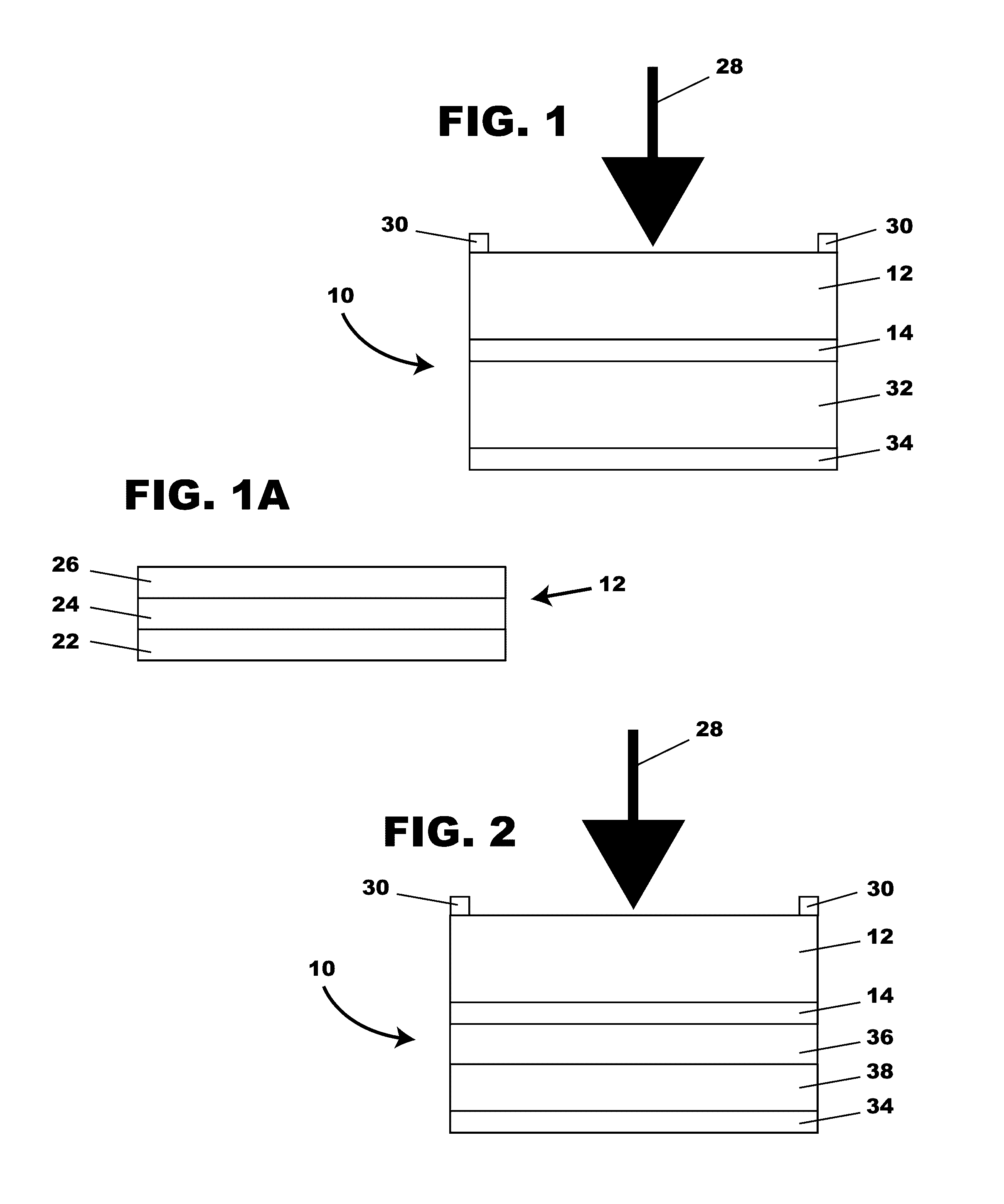Photovoltaic textiles
- Summary
- Abstract
- Description
- Claims
- Application Information
AI Technical Summary
Benefits of technology
Problems solved by technology
Method used
Image
Examples
Embodiment Construction
[0036]The term “deposit” covers all technologies used in coating a surface with a material including but not limited to spraying, dipping, spin coating, vacuum and chemical deposition, printing including, but not limited to, inkjet printing.
[0037]The term “light” includes a range of electromagnetic radiation known as visible light and portions of infrared and ultraviolet spectrums applicable to generating electricity from photovoltaic components.
[0038]The term “photovoltaic” means having a capacity to contribute to the production of electricity across opposite electrodes as a result of being exposed to electromagnetic radiation.
[0039]The abbreviation “PPV” is short for polymer photovoltaic and describes a component or system having photovoltaic function which includes a structural polymer and other materials.
[0040]The abbreviation “PV” is short for photovoltaic and describes a component or system having photovoltaic function, wherein the photovoltaic may not be a polymeric component...
PUM
 Login to View More
Login to View More Abstract
Description
Claims
Application Information
 Login to View More
Login to View More - R&D Engineer
- R&D Manager
- IP Professional
- Industry Leading Data Capabilities
- Powerful AI technology
- Patent DNA Extraction
Browse by: Latest US Patents, China's latest patents, Technical Efficacy Thesaurus, Application Domain, Technology Topic, Popular Technical Reports.
© 2024 PatSnap. All rights reserved.Legal|Privacy policy|Modern Slavery Act Transparency Statement|Sitemap|About US| Contact US: help@patsnap.com










